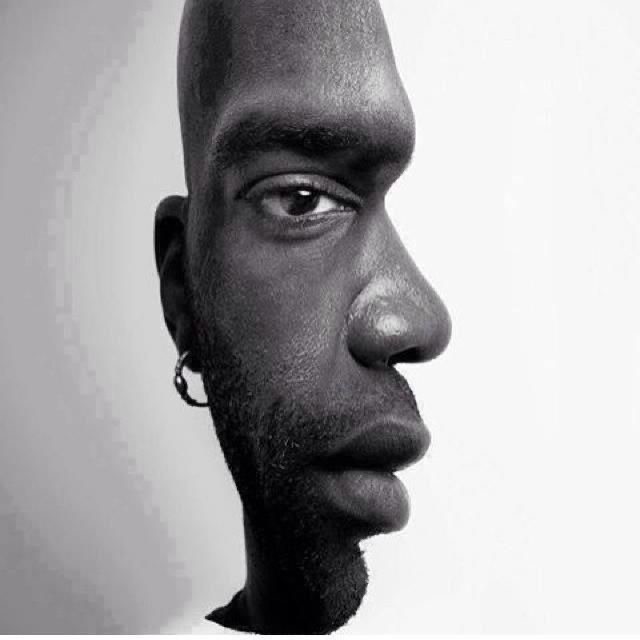Amidst a world drenched in digital imagery and an abundance of captivating visual stimuli, the art of illusion stands as an ever-more entrancing and relevant spectacle. Whether you find yourself within the hallowed halls of a grand art gallery or leisurely scrolling through your social media feed, optical enchantments persistently challenge and reshape the way we perceive the world.
The art of illusion is fundamentally about manipulating perception. Designers, magicians, and artists all use various visual illusions to deceive and confound the mind. The illusionist’s toolbox is wide and flexible, ranging from Escher’s enduringly exquisite impossible geometry to the alluring optical illusions of street painters.

M.C. Escher is regarded as one of history’s greatest illusionists; his astounding lithographs continue to captivate viewers. His complex works, including “Relativity” and “Waterfall,” blatantly violate the laws of physics and invite spectators to consider the nature of reality itself. These optical puzzles invite us to set off on a voyage into the domain of imagination, beyond the bounds of possibility.
Anamorphosis, which distorts an image and reveals its true shape only when viewed from a particular angle or with the help of a reflective surface, is yet another compelling aspect of optical art. Anamorphic art has reached new heights because to the work of street artists like Julian Beever and Edgar Mueller. Their works of art on the pavement radiate a three-dimensional attraction that tempts passersby to reach out and caress an illusory enormous cat or warily tiptoe over the edge of an imaginary chasm.
Optical enchantments refuse to be confined to canvases and pavement canvases; they blend easily into the fabric of our daily lives. Consider the world of fashion, where designers use visual magic to create illusions of stature, svelteness, or curve. From vertical stripes to astute colour choices, these tactics not only question social beauty standards but also enable individuals to accept their unique bodies.

Perspective is one of the most effective weapons available to illusionists. This fundamental component of art gives creators the ability to control how we perceive depth and scale. Trompe-l’oeil, a method that tricks the eye into perceiving a two-dimensional surface as three-dimensional, is a classic example. John Haberle’s well-known “Balcony” is a classic example of the art of perspective, turning a painted wooden board into what appears to be a palpable extension of our reality.
Illusions have evolved beyond traditional art forms in the modern digital world and found new life in multimedia encounters. Designers use CGI to immerse audiences in alternate universes in everything from films and video games to real-world settings. Virtual reality transports users to totally immersive domains where perception dances like a fluid wisp, while films like Christopher Nolan’s “Inception” test viewers’ ability to traverse constantly changing dreamscapes.

The enchantment of optical illusions extends far beyond mere aesthetics; it delves into the enigmatic realms of the human psyche. Cognitive scientists have harboured an enduring fascination with the manner in which our brains decode visual stimuli. Illusions, exemplified by the renowned Müller-Lyer lines, lay bare the intriguing capacity of our brains to be systematically beguiled by elementary geometric configurations, unveiling the intricate inner workings of perception and cognition.
The boundaries of optical art go well beyond still images. In order to create the appearance of motion on a still canvas, visionaries like Bridget Riley have harnessed the powerful potential of optical illusions. Riley’s daring and energetic works, distinguished by their intricate geometric patterns and vibrant colour interactions, arouse a tangible sensation of movement and rhythm, entangling the viewer in a mesmerising visual ballet.
Beyond its visual appeal and intellectual allure, optical illusions can also be effective social critique tools. Illusions are a tool used by artists like Banksy to question society expectations and injustices. As an illustration of the ephemeral nature of hope in a world full of adversity, his famous mural “There Is Always Hope” depicting a balloon girl letting go of her dreams is a shining example.
Beyond its visual appeal and intellectual allure, optical illusions can also be effective social critique tools. Illusions are a tool used by artists like Banksy to question society expectations and injustices. As an illustration of the ephemeral nature of hope in a world full of adversity, his famous mural “There Is Always Hope” depicting a balloon girl letting go of her dreams is a shining example.

Optical illusions are commonly used as metaphors for larger societal issues. Consider the well-known “Hollow Face Illusion,” in which, under certain lighting conditions, a concave mask transforms into a convex face. This illusion may serve as a metaphor for how society sometimes prefers to portray reality in a polished and idealised way while conveniently ignoring the hidden complexities and flaws that exist underneath the surface.
The practise of illusion sets off on a discovery journey. It serves as a poignant reminder that reality frequently holds a more fluid and ambiguous nature than we originally see. It also constantly challenges our preconceptions, deepens our understanding of the human mind, and provides new insights. Illusions entice us to push the limits of our knowledge and beliefs, whether we’re perusing an art museum, taking in a sobering painting, or delving deeply into the world of cognitive research.
Sources
- https://en.m.wikipedia.org/wiki/Relativity_(M._C._Escher)
- https://www.jagranjosh.com/general-knowledge/amp/optical-illusion-puzzle-challenge-how-fast-you-can-find-all-animals-1693992661-1
- https://www.vox.com/platform/amp/science-and-health/20978285/optical-illusion-science-humility-reality-polarization
- https://www.nelson-atkins.org/art-illusion-photography-exhibition-challenges-adage-seeing-believing/




